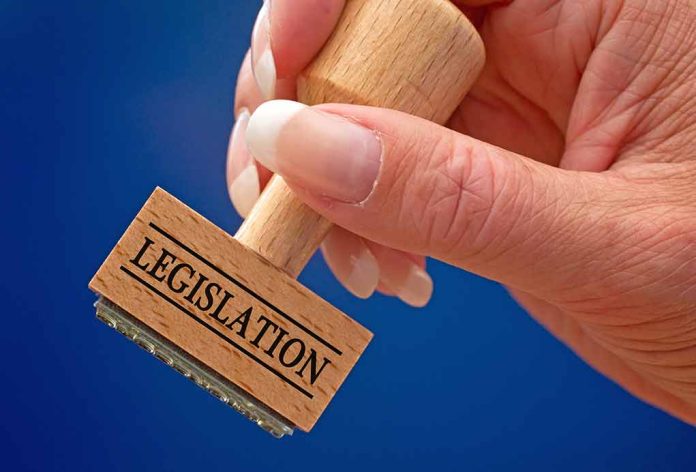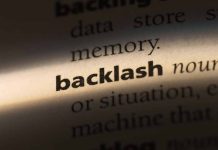
New York City Council’s recent approval of slavery reparations legislation marks a significant moment, but many are left wondering about its potential impact and the challenges ahead.
At a Glance
- The New York City Council passed legislation aimed at addressing the enduring impact of slavery and systemic racial injustices.
- The legislation includes initiatives like a reparations study, a truth and reconciliation process, and a task force for a “freedom trail.”
- Speaker Adrienne Adams emphasized the need to tackle systemic racism and historic inequities.
- The total initiative is estimated to cost $2.5 million.
- Similar reparative actions have been considered or implemented by other U.S. cities.
Details of the New Legislation
The New York City Council passed multiple bills aimed at addressing the historic and ongoing impacts of slavery and racial inequalities. Among these, Introduction 242-A mandates the Commission on Racial Equity (CORE) to establish a Truth, Healing, and Reconciliation process. Another, Introduction 279-A, obligates CORE to study both historical and present-day roles New York City has played in perpetuating slavery and racial injustices. The cost of these studies is projected to be $2.5 million.
Introduction 471-A includes the establishment of a task force to consider creating a citywide and Lower Manhattan “freedom trail” to celebrate abolitionist and Underground Railroad sites. Introduction 833-A requires installing informational signs at the site of New York City’s first slave market. Speaker Adrienne Adams emphasized the importance of facing these systemic issues, noting, “The legacy of slavery and systemic racism has impacted all facets of our society today, and it’s important that our city recognizes and takes steps to redress these longstanding harms.”
Broader Implications and Financial Impact
Other cities, such as Tulsa, Oklahoma, and Evanston, Illinois, have also taken steps towards reparations. While San Francisco approved reparations, funds were later cut, suggesting a need for federal involvement. Introduction 6-A and Introduction 89 set guidelines for notifying council members and informing occupants of their rights following residential vacate orders due to fires. Meanwhile, Introduction 746-A seeks to manage stormwater by improving paved medians. California’s attempt to budget $12 million for a reparations program was defeated, hinting at potential financial and legislative hurdles New York City might face.
“The passage of these bills represents a significant step for New York City. The harm slavery caused Black Americans continues to be felt today. Our nation’s inability to properly redress such a historic wrong allows this deep injustice to continue to manifest itself in distinct, tangible ways––be it the prison-industrial complex, predatory lending, redlining, or inequality in our school systems,” said Council Member Crystal Hudson.
This legislation package must be signed by Mayor Eric Adams, who has shown support for the initiative. Task force members, selected by Mayor Eric Adams and City Council Speaker Adrienne Adams, will have 12 months to hold public hearings and draft their recommendations. The council approved the measure 41-8, and New York is set to become the largest U.S. city to enact such a program.
Community Response and Next Steps
Despite the broad approval, varying viewpoints exist within the community. For instance, Minority Leader Joseph Borelli mentioned, “I’ll move before I’ll pay,” suggesting strong opposition from some leaders. Speaker Adrienne Adams reiterated the importance of addressing these lingering injustices: “The legacy of slavery and systemic racism has impacted all facets of our society today, and it’s important that our city recognizes and takes steps to redress these longstanding harms.”
New York City’s initiative is part of a larger national conversation on reparations. The commission will examine key issues such as unequal participation in the criminal justice system, poor health outcomes, lower homeownership rates, and lack of quality education among African Americans. As Speaker Adrienne Adams highlighted, “The package of legislation would establish a Truth, Healing and Reconciliation process on slavery within New York City (which had one of the highest rates of slave ownership in the country in the 1700s), a reparations study, informational signs at the City’s first slave market, and a taskforce to consider the creation of a ‘freedom trail’ commemorating abolitionist movement and Underground Railroad sites.”
The next steps involve implementing the task force’s recommendations, which may potentially set a precedent for other cities and states in addressing historical injustices.
Sources:
- New York City Council Votes to Acknowledge, Study, and Address Legacy and Impact of Slavery and Racial Injustices in New York City
- New York City lawmakers approve bill to study slavery and reparations
- NYC Council pass bill to create task force to study reparations for black residents
- NYC council passes slavery reparations legislation to ‘yield material solutions’ from US history
- New York City to Study Reparations for Descendants of Enslaved People
- New York City lawmakers approve bill to study slavery and reparations
- NYC council passes slavery reparations legislation to ‘yield material solutions’ from US history
- New York City Lawmakers Approve Bill to Study Slavery and Reparations










